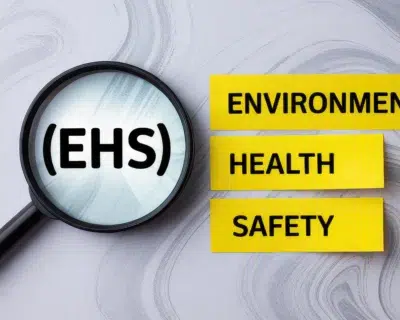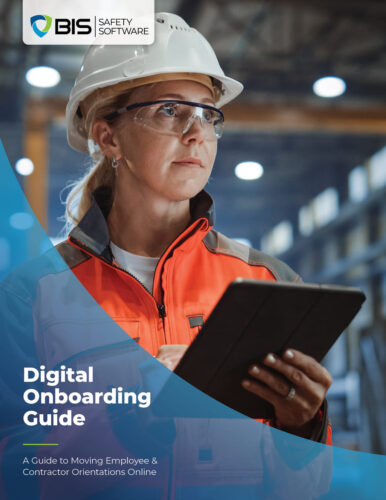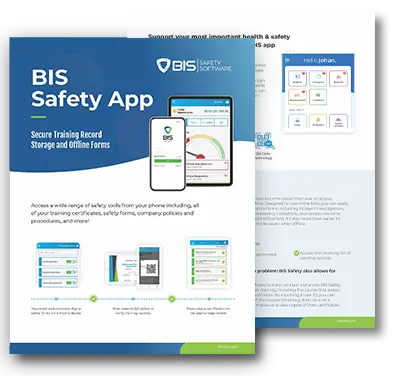
Safety Software Helps Reduce Accidents These 5 Ways
Accidents can happen in any industry, and even employees with office jobs can suffer workplace injuries. However, the risk and potential severity of injuries are much higher in heavy industries – this includes oil & gas, construction, and mining. Some common hazards found in these environments are heavy equipment, high voltage, high temperature, and harmful substances. Safety software can help mitigate these risks and keep your employees safe.
OSHA and the US Bureau of Labor Statistics (US BLS) publish annual data about injuries, illnesses and fatalities in the US. A total of 2,814,000 injuries and illnesses were reported in 2019 (the most recent year available as of April 2021), and 888,200 involved days away from work. In the case of specific heavy industries, the following injury and illness statistics were reported:
- Manufacturing = 421,400
- Construction = 200,100
- Transportation and warehousing = 227,900
- Agriculture, forestry, fishing and hunting = 50,900
- Mining, quarrying, and oil and gas extraction = 9,400
- Utilities = 12,000
Environmental, health, and safety (EHS) software can automate many management tasks related to safety which will contribute to accident prevention. Employees can focus on staying safe while they work, while technology is used to manage key documents like certificates and forms. For example, a Training Record Management System can track courses individually for each employee, sending automatic reminders when certificates are about to expire, or when new training is necessary to keep up with regulations.
In this article, we will describe 5 ways in which safety software helps with accident prevention.
1) Reduce Workplace Risks
Safety software can also be used as a fast communication tool, ensuring that all employees are informed about changing workplace conditions and emerging hazards. For example, if a piece of equipment malfunctions while being used, the operator can suspend the task and report the issue. Since the report is managed with software, all workers who may interact with the affected equipment can be informed immediately. On the other hand, a verbal or handwritten report cannot reach the entire organization with one click. In this case, someone else may try to use the malfunctioning equipment before the issue is reported, and accidents are more likely.
Keeping workers informed about hazards is an effective accident prevention strategy, and safety software can be used for this purpose. Among the 888,200 lost-time injuries and illnesses reported by the US BLS, objects and equipment caused 229,410, falls caused 244,000, and exposure to harmful environments and substances caused 36,840. Many of these accidents can be prevented by keeping workers updated about hazards, or when there are any changes that affect planned activities.
2) Comply With Regulatory Standards
Each jurisdiction has its own safety regulations, and companies who don’t follow them can face legal action and large fines. Compliance becomes more complex when a company operates in many locations since OHS regulations change by state, province, or territory. Meeting the training and documentation requirements of multiple jurisdictions is easier with the help of EHS software.
Based on the job position of each employee and local regulations, safety software can create a robust training program automatically. A software solution can manage the required certificates and track their expiration dates, while providing access to any documents and digital forms that will be required at work.
3) Provide Adequate Training

Regardless of the business sector and job position, safety training must meet three important requirements to be effective:
- Making employees aware of all the hazards they may find while working, which vary by industry and occupation.
- Training employees to spot these hazards in actual workplaces. For example, if workers have been warned about electric shock, they must also know how to identify energized objects and surfaces.
- Training employees to use PPE and other safety measures. Some hazards cannot be avoided fully, and they must be mitigated with PPE and other protection measures. However, these are only effective when used correctly.
With EHS software, companies can ensure that workers have all the safety knowledge necessary before assigning tasks that may expose them to hazards. Managing a training program manually may be possible for companies with a small team, but not when there are many employees in multiple locations. When safety software is used to manage training, employees will not miss any of the required knowledge to stay safe at work.
4) Incident Tracking
Major accidents often give warning signs, but they may go undetected until it’s too late. Near misses and minor accidents are often warning signs of a serious safety issue, and employees should be motivated to report these events.
Safety software can be used as a quick reporting tool, where workers can notify near misses and minor accidents without filling out complex forms. When a specific type of near-miss is being reported frequently, action can be taken to prevent more severe accidents.
5) Inspect Equipment
OSHA and the US BLS reported a total of 186,100 lost-time injuries caused by machinery, vehicles, and hand tools. Safety software not only manages the training requirements of personnel but also the maintenance needs of the equipment. Workers can be reminded automatically about planned equipment inspections, and the corresponding forms can be sent to them in digital format. Equipment malfunctions can be reported right away, so the maintenance department can plan the necessary inspections and repairs. The software can generate an automatic notification, so nobody uses damaged equipment that is waiting for service.
Safety software is also useful as a preventative maintenance tool, ensuring that all inspections are carried out on time regardless of fleet size. Fixing an equipment breakdown is much more expensive than preventing it, and workers may suffer fatal injuries.
Conclusion
Safety software helps companies in key areas like regulatory compliance, information sharing, training, maintenance, and incident monitoring. Management tasks related to safety can be completed automatically by software, while employees focus on actually staying safe at work. Paperwork can be avoided completely with digital forms, which are much easier to manage while using no physical space. EHS software is characterized by its versatility, offering functions like document management, course content delivery, and maintenance planning. Safety software can even be used as a communication tool when unexpected hazards are detected. By implementing safety software into your organization, you can be sure to keep your employees safe.




































